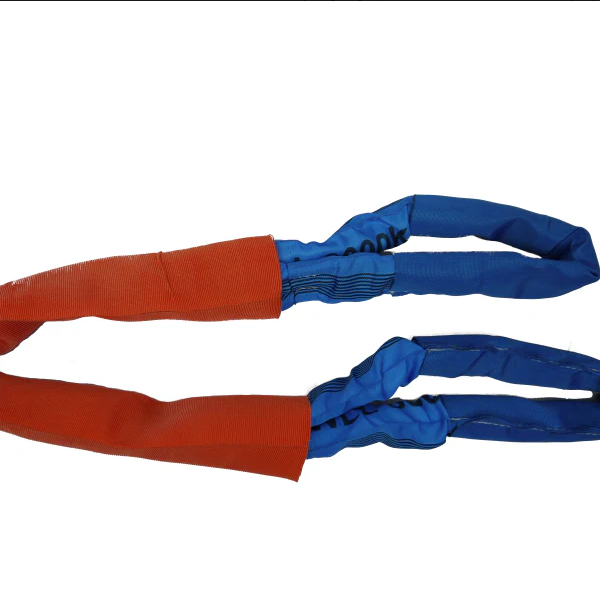Lifting operations involving wire rope slings are integral to various industries such as construction, manufacturing, and material handling. Wire rope slings are versatile and robust tools designed to lift heavy loads safely and efficiently. However, improper use or handling of wire rope slings can lead to accidents, injuries, and damage to equipment. Understanding and avoiding common mistakes is crucial to ensuring the safety and effectiveness of lifting operations. This comprehensive guide explores the common mistakes to avoid when using wire rope slings and provides practical insights into best practices for their safe operation.
1. Neglecting Proper Inspection
One of the most critical mistakes to avoid is neglecting proper inspection of wire rope slings before each use. Inspections should include checking for signs of wear, corrosion, distortion, or any other damage that could compromise the sling's integrity. Overlooking inspection procedures can lead to using slings that are unsafe or unfit for lifting tasks, increasing the risk of accidents and injuries.
2. Exceeding the Safe Working Load Limit (WLL)
Each wire rope sling is rated for a specific Safe Working Load Limit (WLL) based on factors such as sling configuration, size, and material. Exceeding the WLL is a dangerous mistake that can lead to sling failure, causing dropped loads and potential injuries. It is crucial to know and adhere to the WLL specified by the manufacturer for each lifting application.
3. Incorrect Sling Configuration
Using the wrong sling configuration for the lifting task is a common mistake that can compromise safety. Wire rope slings can be used in various configurations such as vertical, choker, and basket hitches. Each configuration affects the sling's WLL and requires specific considerations for load distribution and stability. Using the incorrect configuration can lead to overloading, sling damage, or load instability during lifting operations.
4. Improper Sling Storage and Handling
Improper storage and handling of wire rope slings can contribute to premature wear and damage. Slings should be stored in a clean, dry area away from sunlight and harsh chemicals to prevent corrosion and degradation of the sling material. Avoiding sharp edges and abrasive surfaces during handling helps maintain the integrity of the slings and extends their service life.
5. Inadequate Training and Certification
Lifting operations involving wire rope slings require trained and competent personnel who understand proper rigging practices and safety protocols. Inadequate training or lack of certification can result in errors during sling use, such as improper rigging techniques or failure to inspect slings correctly. Investing in training programs ensures that personnel are knowledgeable about safe lifting practices and comply with industry standards.
6. Ignoring Environmental Factors
Environmental factors such as temperature extremes, exposure to chemicals, and abrasive surfaces can impact the performance and lifespan of wire rope slings. Ignoring these factors can lead to accelerated wear, reduced strength, and potential failure of the slings during lifting operations. It is essential to assess environmental conditions and select slings that are suitable for the specific operational environment to ensure safety and longevity.
7. Using Damaged or Defective Slings
Using damaged or defective wire rope slings is a serious mistake that compromises safety and puts personnel and equipment at risk. Even minor damage such as kinks, broken wires, or worn-out fittings can weaken the sling and increase the likelihood of failure under load. Damaged slings should be removed from service immediately and replaced with new slings that meet safety standards and manufacturer specifications.
8. Neglecting Regular Maintenance and Inspections
Regular maintenance and inspections are essential to ensure the ongoing safety and reliability of wire rope slings. Establishing a schedule for routine inspections and maintenance helps identify wear, damage, or deterioration early on, allowing for timely repairs or replacement of slings as needed. Neglecting these practices can lead to unexpected sling failure during critical lifting operations.
Best Practices for Safe Lifting Operations with Wire Rope Slings
- Conduct thorough inspections of wire rope slings before each use and adhere to manufacturer guidelines for inspection procedures.
- Know and respect the Safe Working Load Limit (WLL) of each sling and ensure it is suitable for the specific lifting task.
- Use the correct sling configuration (vertical, choker, basket) based on the load and lifting conditions to ensure load stability and safety.
- Store wire rope slings properly in a clean, dry environment and handle them with care to avoid damage during storage and transportation.
- Invest in training and certification programs for personnel involved in lifting operations to ensure competency in safe rigging practices.
- Consider environmental factors and select slings that are compatible with the operational conditions to maintain sling performance and longevity.
- Immediately remove damaged or defective slings from service and replace them with new slings that meet safety standards and manufacturer specifications.
- Establish a regular maintenance schedule for wire rope slings, including inspections, lubrication, and repairs, to prolong their service life and ensure safe lifting operations.
Conclusion
Avoiding common mistakes when using wire rope slings is crucial to promoting towing straps safety, efficiency, and reliability in lifting operations. By understanding the importance of proper inspection, respecting load limits, using correct configurations, and adhering to safety protocols, industries can minimize risks associated with sling failures and ensure a safe working environment for personnel and equipment. Implementing best practices and investing in training and maintenance programs demonstrate a commitment to safety and enhance the overall effectiveness of lifting operations with wire rope slings.





Comments